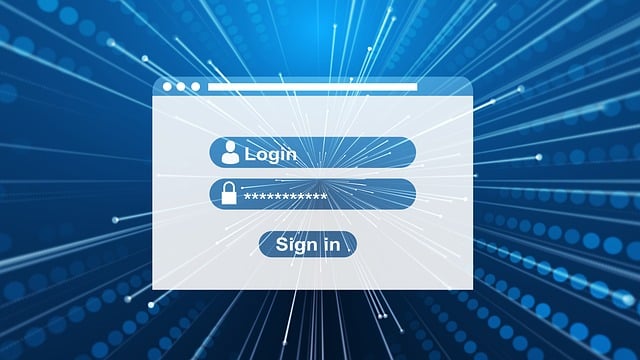After moving, updating your driver's license and vehicle registration with the Department of Motor Vehicles (DMV) through online portals or in person is crucial for legal compliance and avoiding fines. This step ensures accurate record-keeping by the DMV, supports public safety, and allows you to receive important notices and updates on time. Many states have simplified this process with secure and user-friendly digital services, which also protect your personal information with enhanced security measures like multi-factor authentication and encryption. It's important to promptly update your information to prevent issues such as parking tickets, impacted auto insurance coverage, and avoidance of lapsed registration fines. Organize necessary documents for the update, utilize online services where available, or visit a DMV office to maintain your vehicle's registered status and comply with state regulations effectively.
navigating the complexities of relocating often includes updating various administrative details, among them, your DMV registration. As you settle into your new home, it’s imperative to ensure that your vehicle registration reflects your current address to maintain uninterrupted service and avoid potential penalties. This article delves into the necessity of this update, streamlining the process with a step-by-step guide for online DMV address changes. We will explore the critical implications of overlooking such updates, the robust security features implemented in new online portals, and tips to facilitate a seamless transition. Stay informed, avoid the pitfalls of outdated records, and keep your motoring experience smooth and compliant.
- Understanding the Importance of Updating Your DMV Address Post-Move
- Step-by-Step Guide to Updating Your DMV Registration Online
- The Consequences of Overlooking DMV Address Changes
- Enhanced Security Measures in New DMV Online Portals
- Tips for a Smooth DMV Address Update Experience
Understanding the Importance of Updating Your DMV Address Post-Move

When relocating, updating your driver’s license and vehicle registration information with the Department of Motor Vehicles (DMV) is a critical step to ensure that all official documents are current. This update is imperative for maintaining compliance with state laws and ensuring that any important mail, such as registration renewal notices or critical communications, reaches you without delay. Failure to do so can lead to a host of complications, including the inability to legally operate your vehicle and potential fines for late updates. The DMV plays a pivotal role in maintaining accurate records, which are essential for public safety and administrative efficiency.
Fortunately, many states have simplified the process of updating your information through user-friendly online portals. These platforms offer a streamlined experience that allows you to make necessary changes from the convenience of your home or office. By leveraging these digital tools, you can complete the address update promptly, reducing the risk of disruptions in your mail delivery and avoiding unnecessary penalties. It’s a proactive measure that safeguards your legal standing and keeps you informed about important vehicle-related matters. Staying on top of this administrative task ensures peace of mind and compliance with state regulations, making it a key step in your post-move checklist.
Step-by-Step Guide to Updating Your DMV Registration Online

When relocating, updating your vehicle registration with the Department of Motor Vehicles (DMV) is a critical step to ensure that all your vehicular documents and notifications are sent to your current address. Failure to update your information promptly can result in missed renewal notices or important communications regarding your vehicle registration status. Fortunately, many states have streamlined this process by offering online portals for address updates. This digital approach not only saves time but also enhances security.
To initiate the update, visit your state’s official DMV website. Look for a section typically labeled ‘Online Services,’ ‘My Account,’ or ‘Update Information.’ You will be prompted to log in or create an account if you haven’t already done so. Once logged in, navigate to the ‘Update Personal Information’ or similar option. Here, you will input your new address, verify your current registration details for accuracy, and confirm that the new address is where all future correspondence should be sent. Be prepared to provide any necessary documentation as required by your state. After submitting the updated information, you will receive confirmation that your registration has been updated, along with instructions if any additional steps are needed. Keep in mind that the specifics may vary slightly from one state to another, so it’s advisable to refer to your state’s DMV guidelines for precise instructions. Upon completion, you can rest assured knowing that your vehicle registration is current and that important documents will reach you at your new address without delay.
The Consequences of Overlooking DMV Address Changes

Overlooking the necessity to update your DMV address after moving can lead to a cascade of complications. Your vehicle registration remains linked to your old address, which can result in law enforcement issuing tickets if your car is parked or stopped in areas where parking regulations have changed due to your new location. Furthermore, failure to promptly notify the DMV can jeopardize your auto insurance coverage, as insurers rely on accurate addresses to assess risk and determine premiums. Additionally, with outdated records, you risk not receiving critical renewal notices or important communications from the state, which could lead to lapsed registration and associated fines. These consequences underscore the importance of addressing this administrative task without delay to maintain compliance and avoid potential legal and financial repercussions. The integration of online portals by many states provides a convenient and secure means to update your information, making it easier than ever to stay current with your DMV records and ensure that all your correspondence reaches you at your new address, avoiding any unwanted surprises or penalties.
Enhanced Security Measures in New DMV Online Portals

The Department of Motor Vehicles (DMV) across various states has implemented enhanced security measures within their online portals to safeguard personal information and ensure the integrity of transactional data. These advancements are a direct response to the increasing sophistication of cyber threats and the necessity to protect citizens’ privacy. The new system employs multi-factor authentication, which requires users to provide two or more forms of identification before accessing their accounts, significantly reducing the risk of unauthorized access. Additionally, all data transmitted through these portals is encrypted using state-of-the-art encryption technologies, ensuring that sensitive information such as social security numbers and addresses remain confidential during the update process. The integration of these security measures has not only fortified the system against potential breaches but also streamlined the process for users to update their information, making it both secure and user-friendly. As a result, drivers can rest assured that their personal details are protected while effortlessly keeping their vehicle registration information current with the DMV. This proactive approach in adopting robust security protocols underscores the DMV’s commitment to modernizing its services and providing a secure platform for citizens to manage their driving records and vehicle registrations.
Tips for a Smooth DMV Address Update Experience

When updating your address with the Department of Motor Vehicles (DMV), it’s crucial to approach the process methodically to ensure a smooth transition. Firstly, gather all necessary documentation beforehand; this typically includes proof of your new address such as a utility bill or lease agreement, and your current driver’s license or state identification card. Ensure that these documents are clear, legible, and up-to-date to avoid any delays in processing.
Secondly, determine the most convenient method for updating your information. Many states now offer online services that allow you to change your address quickly and securely from the comfort of your home. If online options are available, take advantage of them; this not only saves time but also reduces the need to visit a DMV office in person, which can be more time-consuming and less flexible with schedules. If an online update isn’t possible, locate your nearest DMV office and schedule an appointment to avoid long wait times. Lastly, keep track of any confirmation emails or receipts you receive after submitting your information, as they will contain important details about the status of your address change and any subsequent actions you may need to take. By following these steps, you can navigate the DMV address update process with minimal stress and ensure that your vehicle registration remains current and compliant with state regulations.
Updating your DMV address post-move is a critical step to maintain compliance with state regulations and ensure uninterrupted vehicle registration services. This article has outlined the importance of such updates, provided a clear guide on how to execute this task online, and highlighted the security features implemented in the new DMV portals. By staying informed and proactive, you can steer clear of potential fines or issues arising from outdated information. In summary, a prompt address change through your state’s DMV online portal is not just a formality; it’s an essential aspect of responsible vehicle ownership that safeguards your rights on the road.



